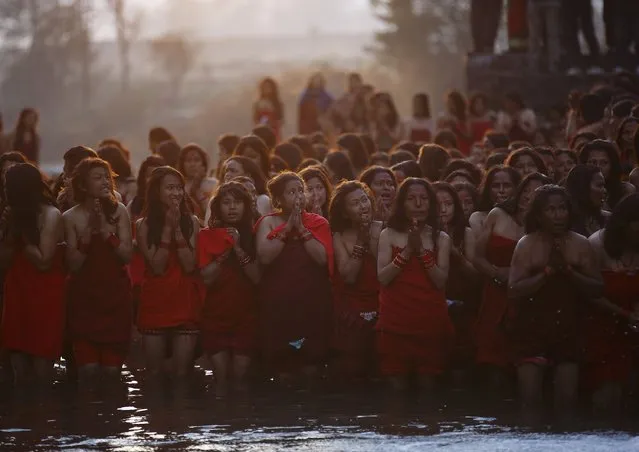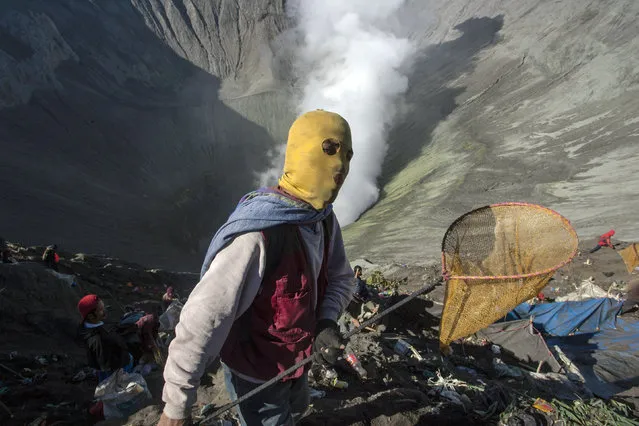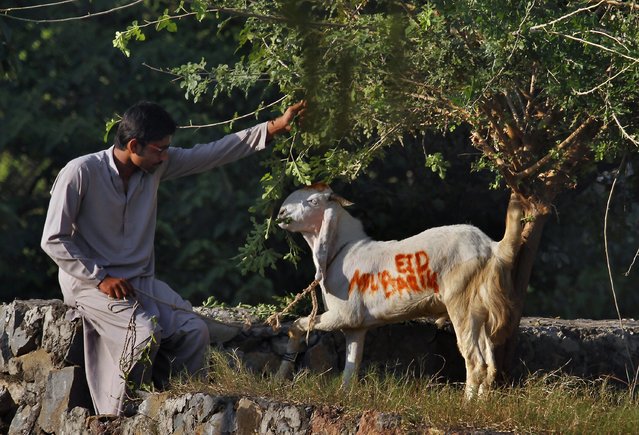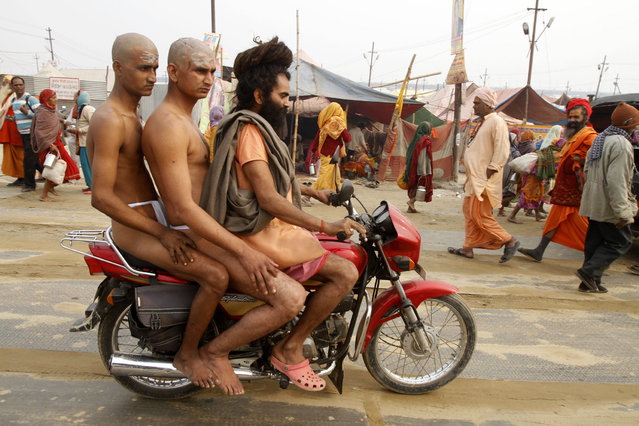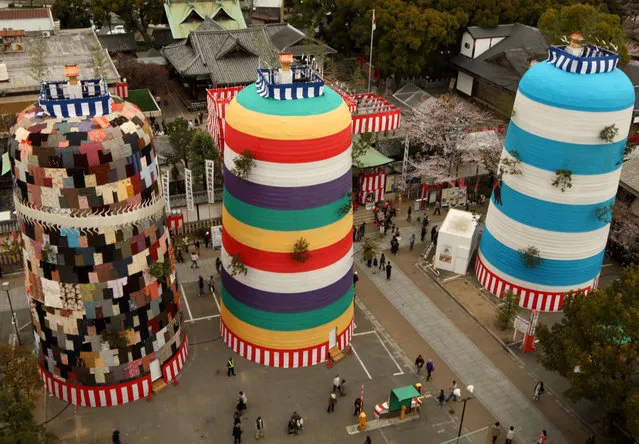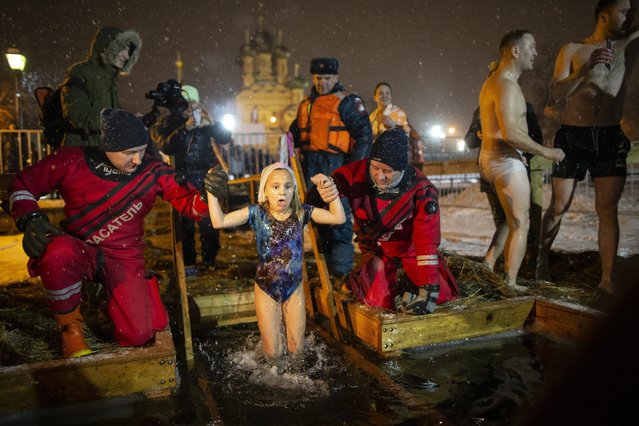
Russian Emergency Situations employees help a girl to bath in the icy water on Epiphany at the Church of the Holy Trinity in Ostankino near TV Tower in Moscow, Russia, Friday, January 18, 2019. Across Russia, the devout and the daring are observing the Orthodox Christian feast day of Epiphany by immersing themselves in frigid water through holes cut through the ice of lakes and rivers. Epiphany celebrates the revelation of Jesus Christ as the incarnation of God through his baptism in the River Jordan. (Photo by Alexander Zemlianichenko/AP Photo)
20 Jan 2019 00:07:00,post received
0 comments


